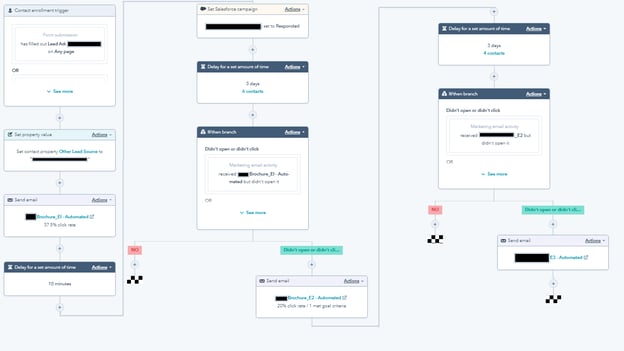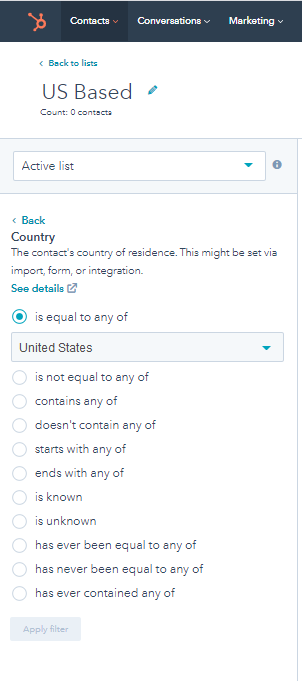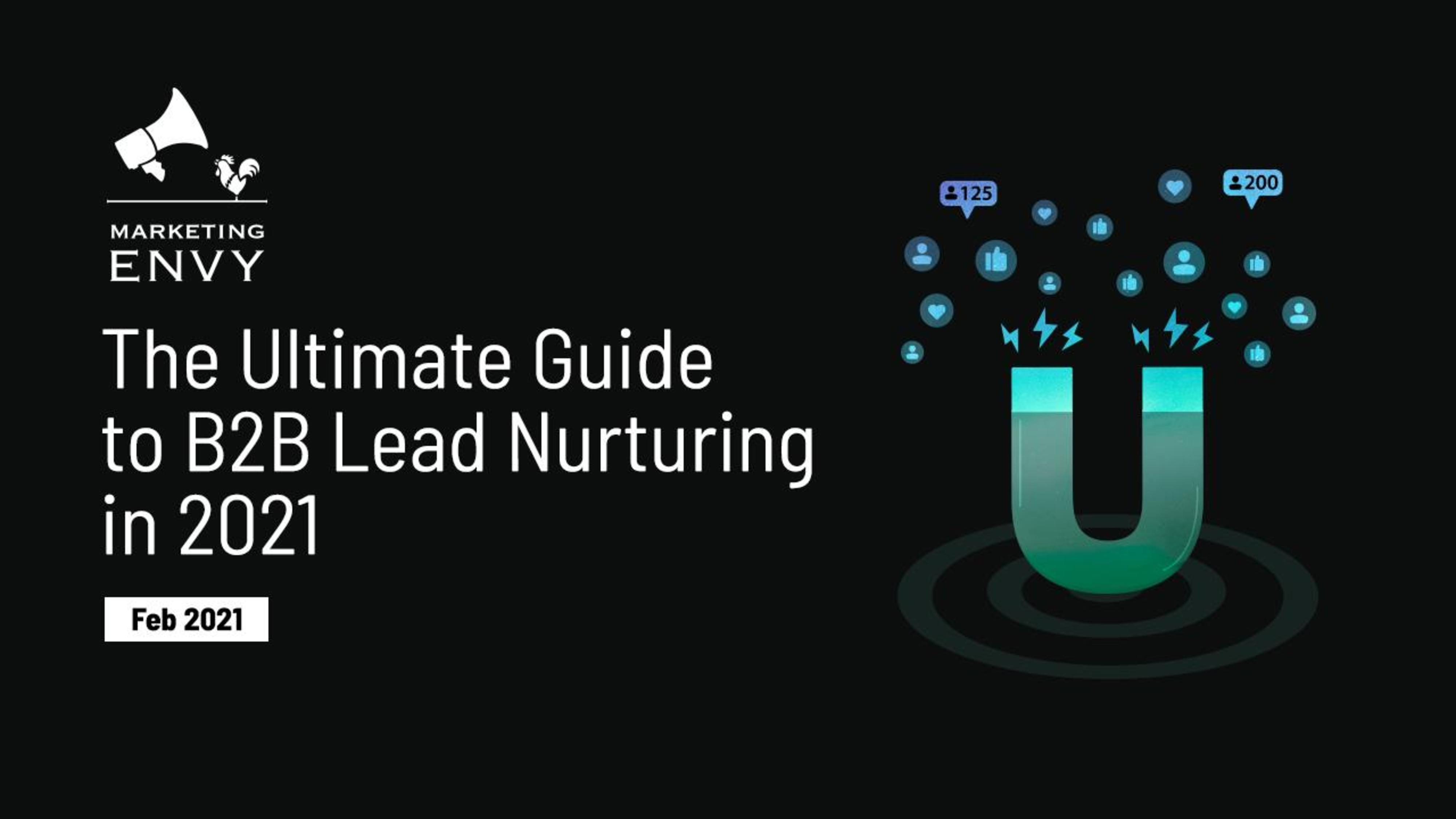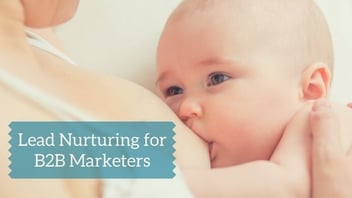-2.jpg?width=920&height=400&name=big%20(3)-2.jpg)
The 7 Steps to a Winning B2B Lead Nurturing Campaign
B2B lead nurturing is crucial for driving conversions and revenue scientifically and removing "gut instinct" from the equation. These B2B lead nurturing nuggets will help you tweak your funnel for better results.
74% of companies say converting leads is their TOP PRIORITY. B2B lead nurturing isn't a "nice to have" anymore. For all the leads that land at your door, few are ready to purchase immediately, and many will never convert at all. Sorting the wheat from the chaff requires expertise and educated guesswork, in the form of B2B lead nurturing.
1. Those low-hanging fruits are just waiting to be picked! (AKA MQLs)
There are some leads that are just waiting to be picked. Don’t miss your chance. Scan your contact list for indicators that regularly convert well, whether that's:
- Specific lead job titles
- Company size
- Opening a particular email many times
- Certain content pieces, or highest revenue-generating products.
When you find them apply the same tactics and rules to similar contacts who've just entered your lead nurturing funnel. Create a specific content plan for each persona, incorporating all your most effective approaches.
2. Marketing Automation: It doesn’t all need to be manual grunt work!
Marketing automation is your best friend. Nurturing leads does not need to be a ton of work. When you automate lead nurturing workflows, you ensure that you always respond at the right time and no one falls through the cracks.
Marketing automation platforms like HubSpot, Marketo, and Pardot offer automated lead nurture workflows as a series of emails, each with a clear CTA. The platform automatically scores leads according to the actions they take, and then sends the appropriate follow-up email or triggers a call from a sales rep.

A workflow nurturing a PPC lead detailing emails sent and time lags
3. Lead Scoring and Marketing Automation Go Hand in Hand
Don’t do one without the other! Lead scoring involves setting a value for each activity carried out by a lead, such as opening an email or downloading a white paper, and totting them up to create an overall score.
When a lead score crosses certain thresholds, you'll take action. The advantage of lead scoring is that you'll stop having sales disqualify leads based on their gut instincts, and start following up leads that really are interested in your solution.
4. Seek out funnel leaks and work to plug them
Every funnel can have leaks (leads exiting the sales process , such as leaving a page before submitting contact details). It’s important to take action and plug these leaks, be it through optimizing a form, a landing page etc. You first need to know a leak exists so consistently investigate, look for clues like:
- Low conversion rates from specific landing pages
- High unsubscribe rates following certain emails
- Too many obstacles in the funnel, like too many forms or forms that are too long
If you don't measure your results, you'll never discover which unknown leaks are spouting away.-2.png?width=411&name=pasted%20image%200%20(1)-2.png)
5. Add only the right leads in the funnel
It's tempting to compensate for leaked leads by shoveling more prospects into the funnel, such as advertising to audiences that completely differ from your ICP. Stop! This is a hugggeee mistake. You end up overwhelmed by leads who aren't a good fit for your products.
You'll do better by working to increase the quality of your leads, not just the quantity, while improving your funnel. That said, if your funnel isn't wide enough, you'll be hard pressed to find enough leads to convert at all, so don't ignore the initial flow of prospects. Market to your ICP on the platforms they’re on to ensure a steady flow of leads (there are lots of options. The average user has 8 social platforms they use).
6. Define KPIs to calculate effectiveness
Just like everything else in B2B marketing, if you don't measure the impact of your lead nurture program, you won't know how well you're succeeding.
Consider these questions:
- What results do you want to achieve?
- Which success metrics will you track?
Set up campaign dashboards. Pick accurate leading and lagging indicators, such as website traffic or new leads, and ensure they're tied directly to your initial program goals. It's important to establish a framework for tracing and reporting data before you go live.
7. Segment leads appropriately
Close to 30% of marketers are using audience segmentation to send out emails! Personalization is everything, so replace generic lead nurture programs with customized funnels that are tailored for each segmented audience.
You can segment based on industry, location, company size and many other metrics.

Once the segmented lead nurturing campaign is set up, monitor:
- Differences in performance based on segment. Take particular notice of general KPIs like open rate, click-through rate, and conversion rate
- A/B testing for different subject lines, designs, and sender names
If one segment performs better try and figure out why, is it content based or is it audience based.
Lead nurturing is the key to B2B marketing success
The above are just the starting point of your lead nurturing success. There’s far more to it than we could fit in this blog. So much so that we’ve created this ebook:
Take Me to the Full eBook | Download the eBook
If you need the leading B2B marketing agency to manage all the moving parts and adjust your B2B lead nurturing funnel for success, contact Marketing Envy.
PS: If you found this helpful, I'd really appreciate if you can click here to share it on Twitter - besides helping my ego, it's just fun to get notifications 😉








.jpg?width=352&name=23%20(1).jpg)
